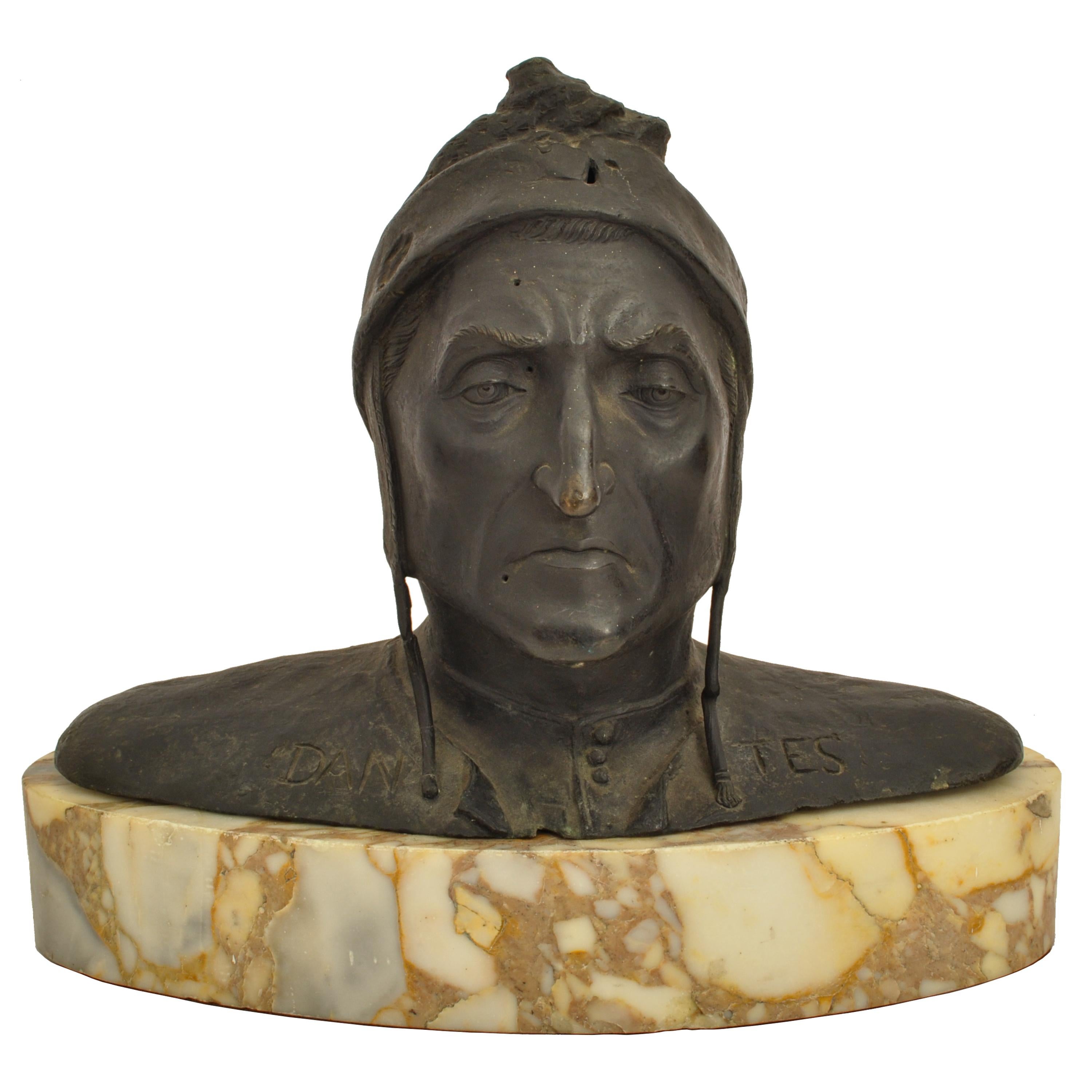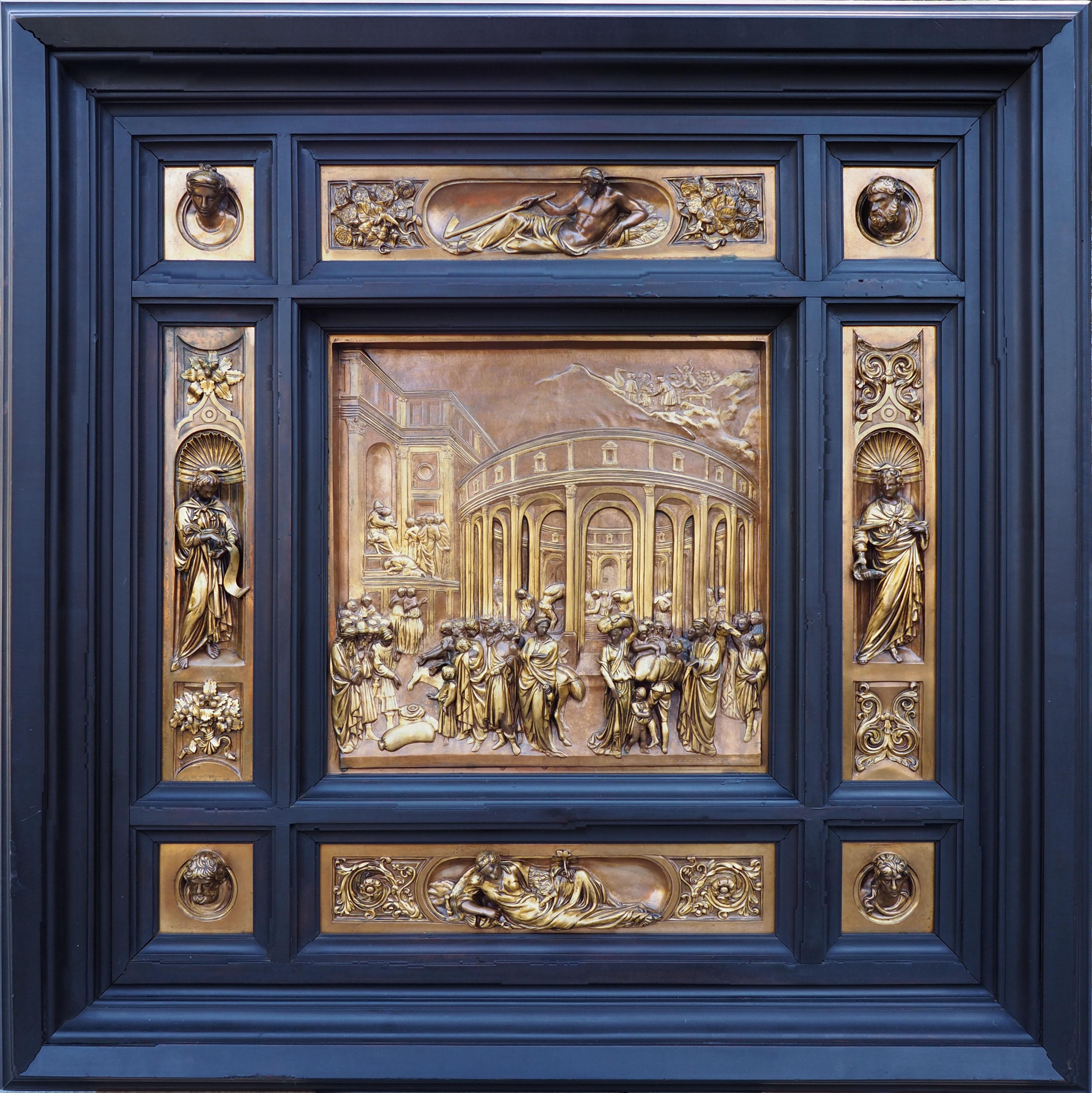Items Similar to A Rare Gilt and Patinated Bronze Jockey on A Horse, circa 1875
Want more images or videos?
Request additional images or videos from the seller
A Rare Gilt and Patinated Bronze Jockey on A Horse, circa 1875C. 1875
C. 1875
About the Item
Isidore-Jules Bonheur (French, 1827–1901)
A Rare Gilt and Patinated Bronze Jockey on A Horse, circa 1875.
Introducing a truly exceptional and highly sought-after piece, a rare gilt and patinated bronze sculpture titled "Jockey on a Horse" by Isidore-Jules Bonheur. This remarkable artwork is a testament to Bonheur's mastery as a sculptor, capturing the dynamic energy and grace of both the jockey and his powerful equine companion.
Isidore-Jules Bonheur, a celebrated 19th-century French sculptor, was renowned for his ability to breathe life into bronze. This sculpture exemplifies his exceptional talent and unwavering attention to detail, making it a coveted treasure for art enthusiasts and collectors worldwide.
The sculpture showcases a jockey atop a spirited horse, frozen in a moment of captivating motion. The meticulous craftsmanship is evident in every aspect, from the intricate details of the jockey's attire to the sinewy muscles and flowing mane of the horse. The rich gilt and patinated bronze finish lend a sense of opulence and depth, accentuating the dynamic composition.
The interaction between the jockey and the horse is expertly captured, conveying a sense of harmonious partnership and unity. This remarkable sculpture encapsulates the thrill and spirit of equestrian pursuits, serving as a tribute to the timeless bond between man and horse.
This remarkable artwork not only captures the essence of Bonheur's artistic brilliance but also embodies the spirit of equestrian culture and the rich history of sporting art. Its enduring beauty and universal appeal ensure a desirable addition to any prestigious art collection or as a centerpiece in a sophisticated interior space.
Signed I. Bonheur
A comparable example is in the permanent collection of the Metropolitan Museum of Art
Accession Number: 64.248
Measures: 12" high x 12" wide x 5" deep
Overall excellent condition. Very crisp quality.
- Creation Year:C. 1875
- Dimensions:Height: 12 in (30.48 cm)Width: 12 in (30.48 cm)Depth: 5 in (12.7 cm)
- Medium:
- After:Isidore Jules Bonheur (1827 - 1901, French)
- Period:
- Condition:
- Gallery Location:New York, NY
- Reference Number:1stDibs: LU1151212716602
About the Seller
5.0
Vetted Seller
These experienced sellers undergo a comprehensive evaluation by our team of in-house experts.
Established in 1980
1stDibs seller since 2019
13 sales on 1stDibs
Typical response time: <1 hour
- ShippingRetrieving quote...Ships From: New York, NY
- Return PolicyA return for this item may be initiated within 7 days of delivery.
More From This SellerView All
- A Rare and Important Bronze Bust of MichelangeloBy Albert-Ernest Carrier-BelleuseLocated in New York, NYAlbert-Ernest Carrier-Belleuse, (1824 1887) A Rare and Important Patinated Bronze Bust of Michelangelo On A Rouge Marble Base. Presenting an extraordinary and highly collectible ma...Category
19th Century Figurative Sculptures
MaterialsMarble, Bronze
- Exceptional French Orientalist Bronze Sculpture "Le Marchand d' Armes Turc"By G. GueytonLocated in New York, NYAn Exceptional French Orientalist Bronze Sculpture "Le Marchand d' Armes Turc" (The Turkish Arms Dealer) by G. Gueyton, (French, 19th Century) Discover the allure of the Orient thr...Category
19th Century Figurative Sculptures
MaterialsBronze
- Italian Patinated Bronze Group Sculpture of Laocoon and His Sons, C. 1870Located in New York, NYAn Italian grand tour patinated bronze group sculpture of Laocoon and his sons, After the antique by Agesander of Rhodes, C. 1870 Very nice quali...Category
19th Century Figurative Sculptures
MaterialsBronze
- Large and Rare Patinated Bronze Bust of George Washington, by F. BarbedienneBy F. Barbedienne FoundryLocated in New York, NYA Large and Rare Patinated Bronze Bust of George Washington, after Houdon by F. Barbedienne Foundry, circa 1870. Very nice quality green patinated bronze bust of President...Category
19th Century Figurative Sculptures
MaterialsBronze
- A Monumental French Patinated Bronze Bust of William Shakespeare, after HoudonBy F. Barbedienne FoundryLocated in New York, NYA Monumental French Patinated Bronze Bust of William Shakespeare, after Houdon, by F. Barbedienne Foundry, circa 1870. Masterfully and realistically sculpted in solid bronze, this b...Category
19th Century Figurative Sculptures
MaterialsBronze
- La Chasse Au Lion, The Lion Hunt, Monumental Bronze Sculpture after Aime MilletLocated in New York, NY"La Chasse Au Lion", "The Lion Hunt", A Monumental French Orientalist Bronze Sculpture after Aime Millet (1818–1891), circa late 19th century. This bronze s...Category
Late 19th Century Figurative Sculptures
MaterialsBronze
You May Also Like
- Surreal Figurative Sculpture, "Lovers"Located in San Diego, CAThis is a one of a kind original bronze surrealist figurative sculpture by San Diego artist, Debbie Korbel. Its dimensions are 41" x 42" x 34". A certifi...Category
2010s Surrealist Figurative Sculptures
MaterialsBronze
- Antique Italian Grand Tour Bronze Marble Bust Sculpture Dante Alighieri 1880Located in Portland, ORA good antique Italian Grand Tour Bronze and marble bust of Dante Alighieri, circa 1880. The bronze is most likely Florentine and mod...Category
Late 19th Century Italian School Figurative Sculptures
MaterialsMarble, Bronze
- WHITE HINGED POEM DRESS,By Lesley DillLocated in New York, NYLESLEY DILL WHITE HINGED POEM DRESS, 1994 patinated bronze 55 x 37 x 30 in. 139.7 x 94 x 76.2 cm. Edition of 4Category
1990s Contemporary Figurative Sculptures
MaterialsBronze
- Growing in a Fragmented LandscapeBy Jennyfer StratmanLocated in Los Angeles, CAThere is a metaphorical interplay between the natural imagery international artist, Jennyfer Stratman, uses and its multiple meanings. While the human figure features strongly, it is...Category
21st Century and Contemporary Contemporary Figurative Sculptures
MaterialsMetal, Bronze, Enamel, Steel, Copper
- Cefiro - Renaissance Inspired Bronze Sculpture of an Acrobat set on Tall StandBy Jesus Curia PerezLocated in Chicago, ILCefiro is derived from the Spanish word for Zephyr, meaning a soft gentle wind which brings spring to the Mediterranean. The word also depicts beauty and playfulness. This figure p...Category
21st Century and Contemporary Contemporary Figurative Sculptures
MaterialsBronze, Steel
- The Story of Joseph from the Second Baptistery Doors, Florence (“The Gates of PaBy Ferdinand BarbedienneLocated in New York, NYFerdinand Barbedienne (Saint-Martin-de-Fresnay 1810 – 1892 Paris) after Lorenzo Ghiberti (Florence, 1378 – 1455) Signed at the lower right of the principal relief: F. BARBEDIENNE Provenance: Private Collection, USA. Barbedienne’s “Gates of Paradise” reliefs are one of the triumphs of nineteenth-century bronze casting and patination. The nine panels that comprise our example are half-size reductions of the famous originals by Lorenzo Ghiberti, made for the Baptistery of Florence and now housed in the Museo del Opera del Duomo. Mounted in an impressive, mullioned frame surround, our work is an exceptional exemplar of the Renaissance Revival, the broadly influential style and movement that infused architecture, design, and artistic culture in the latter half of the nineteenth century. The central scene, The Story of Joseph, is perhaps the most celebrated of the entire series depicting as it does seven episodes from the Biblical narrative integrated into a single composition: Joseph cast by his brethren into the well, Joseph sold to the merchants, the merchants delivering Joseph to the pharaoh, Joseph interpreting the pharaoh’s dream, the pharaoh paying him honor, Jacob sending his sons to Egypt, and Joseph recognizes his brothers and returns home. The surrounding reliefs—two vertical figures in niches, two recumbent figures, and four portrait heads in roundels—are as well faithful reductions of Ghiberti’s original bronzes on other parts of the doors. The maker of these casts was the renowned 19th-century French fondeur Ferdinand Barbedienne. Gary Radke has recently written of this great enterprise: “The Parisian bronze caster Ferdinand Barbedienne began making half-sized copies of ancient and Renaissance sculpture in the 1830s. His firm benefitted enormously from the collaboration of Achille Collas, whom Meredith Shedd has shown was one of numerous pioneers in the mechanical reproduction of sculpture. Their competitors largely devoted themselves to reproducing relief sculpture, but Collas devised a process for creating fully three-dimensional copies. A tracing needle, powered by a treadle, moved over the surface of a full-sized plaster cast or bronze of the original and triggered a complementary action in a cutting stylus set over a soft plaster blank…He signed an exclusive contract with Barbedienne on November 29, 1838, and won medals for his inventions in 1839 and 1844. Barbedienne’s half-sized copies of the Gates of Paradise were famous not only for their fidelity to the original, but also for the way their gilding…suggested the glimmering surface that was hidden under centuries of dirt. Some critics even saw Collas’s and Barbedienne’s work as ‘philanthropic, an exemplary adaptation of industry to the requirements of art, the artist, the workers, and the public alike.’ At 25,000 francs, Collas’s and Barbedienne’s reduction of the Gates of Paradise was singularly more expensive than any other item for sale in their shop. All the reliefs, individual statuettes, and busts were cast separately and could be purchased either by the piece or as an ensemble. Fittingly, Barbedienne’s accomplishment earned him the Grand Prix at the 1878 Paris Exposition Universelle, along with numerous other medals.” Three complete examples of the Barbedienne-Ghiberti doors are known. One, first installed in a chapel in the Villa Demidoff of San Donato near Pratolino, was later acquired by William Vanderbilt...Category
Late 19th Century Figurative Sculptures
MaterialsBronze




